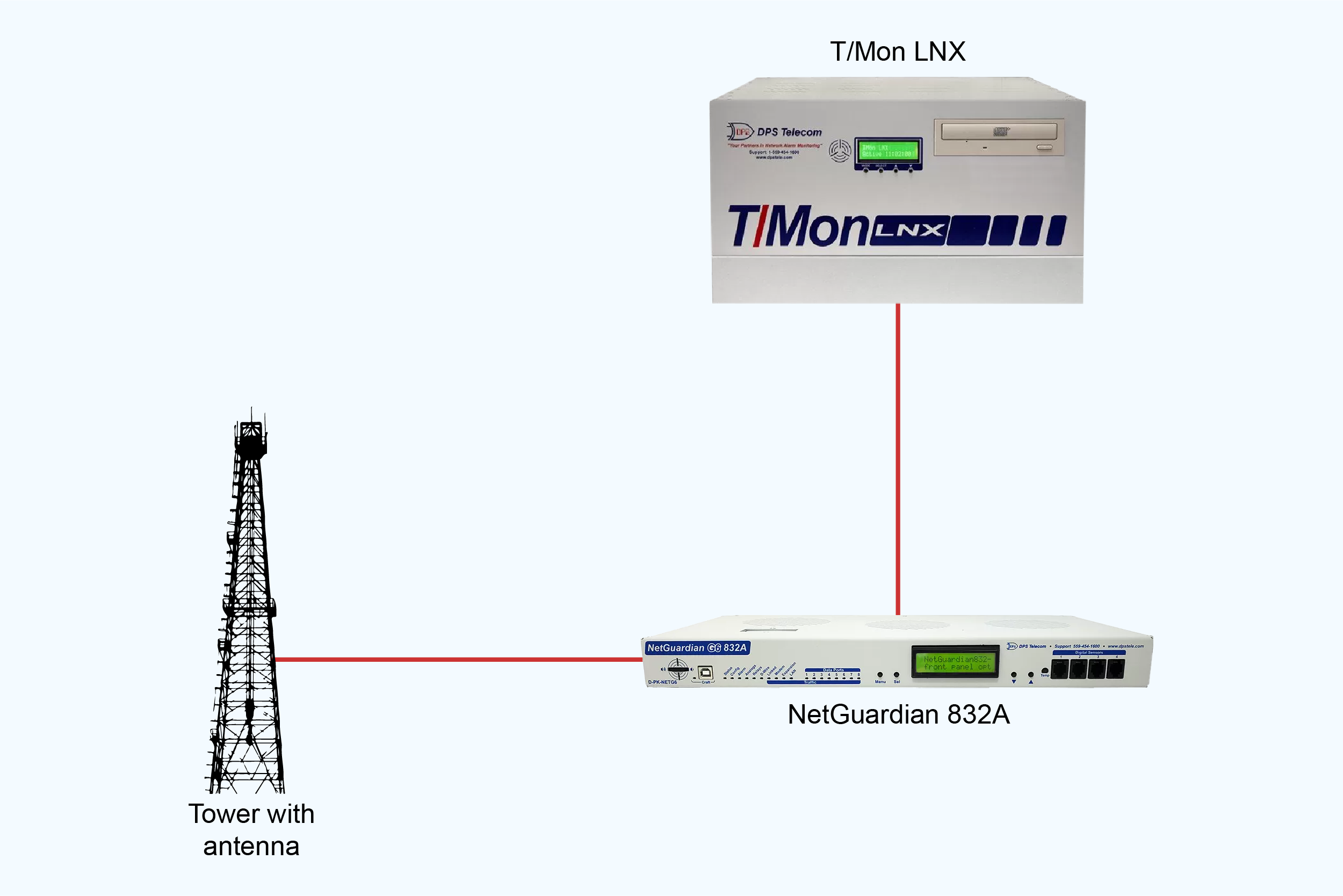Download our free Monitoring Fundamentals Tutorial.
An introduction to Monitoring Fundamentals strictly from the perspective of telecom network alarm management.
1-800-693-0351
Have a specific question? Ask our team of expert engineers and get a specific answer!
Sign up for the next DPS Factory Training!

Whether you're new to our equipment or you've used it for years, DPS factory training is the best way to get more from your monitoring.
Reserve Your Seat TodayA microwave antenna is a major system component that allows a microwave system to transmit and receive data between microwave sites. They are usually located at the top of a tower.

To operate properly, a microwave antenna must be located high atop a microwave tower. Placing these antennas on towers allows microwave signals to be sent longer distances that wouldn't be possible otherwise. This allows the antenna to transmit data to other antennas via line-of-sight propagation. There cannot be any structures, including mountains or large buildings, directly between the two antennas. Obstructing the antennas line-of-sight path will prevent the microwave gear from properly transmitting complete microwave messages. When the line-of-sight's path is clear, data can travel through the microwave system. This need for clear airspace is very important and defines "line of sight" technologies.
When building or modifying an antenna tower, particularly a microwave antenna tower for communications, it's important to follow Federal Aviation Administration (FAA) guidelines. These structures, which are commonly found at microwave tower locations, must meet specific FAA standards for painting and lighting to make sure they are visible and safe for surrounding areas.
Before initiating any work on a microwave tower, it is necessary to obtain FAA clearance, which confirms that the structure poses "no hazard" to aerial navigation. This clearance - along with proper documentation filing with regulatory bodies - is needed to maintain compliance and safety at each microwave tower location.
The FAA provides detailed specifications through its advisory circulars, which outline the requirements for lighting and painting these towers. If multiple options are allowed, the person seeking FAA clearance can specify their preference on FAA Form 7460-1. This form enables individuals to choose among various types of marking and lighting systems approved by the FAA. For telecommunications towers, the most common option is to substitute white flashing lights for the traditional combination of red lights and painting. This option is frequently approved by the FAA due to its effectiveness in ensuring visibility and compliance with safety standards.
If the FAA determines that the microwave tower could create an obstruction or hazard, construction or modifications cannot proceed without FAA approval. This makes meeting FAA guidelines a critical step for anyone looking to establish or update microwave towers (or any similar antenna tower). Ensuring compliance not only protects airspace safety but also facilitates the required permits to legally operate microwave towers for communication and data transmission needs.
Your microwave antenna is the key to your communications. You need to know if anything has obstructed your important data transmission. This is why you need to deploy a network alarm monitoring system for your microwave antenna towers and other gear. These systems will provide you with instant email and pager alerts. They'll alert you when they detect a problem. The problem could be with your microwave antenna. It could also be with other important system components. This will allow you to quickly send a technician out to your site. The technician can then evaluate and correct the problem.
You may or may not be aware of the Federal Communications Commission's requirements. These rules apply to monitoring your microwave antenna tower lights for safety reasons. You must monitor your microwave antenna tower lights to avoid hefty fines from the FCC for light failures. Based on their location, height, and markings, some tower lights will pose an aviation hazard. Pilots must be able to see your tower lights when they're navigating an aircraft. These rules still apply even if you're not actively using all of your microwave antenna towers. This includes the tower lights at your decommissioned sites. Deploying alarm monitoring systems for your decommissioned tower sites will save you from making a major demolition investment. You'll also meet the FCC's safety requirements.
The FCC's authority to mandate tower lighting and marking stems from federal law, specifically under 47 U.S.C. 303(q). This legislation empowers the FCC to ensure that antenna towers do not become a menace to air navigation. The regulations are not arbitrary; they rely on the Federal Aviation Administration's advisory recommendations, which are detailed in FAA Advisory Circulars.
While the FAA's guidelines are advisory, the FCC has adopted these standards into its rules, making them mandatory for all antenna towers. These rules are encapsulated in 47 CFR 17.21-17.58, thereby integrating FAA specifications into enforceable FCC regulations.
If you're microwave antenna tower is in an unmanned remote location, this makes it more susceptible to copper theft. Thieves will target places that they believe are easy targets, especially locations with no form of monitoring system in place. Victims of copper theft will suffer some form of loss: windshield time, money, and a sense of security at their sites. Prevent these losses from happening to you by deploying an alarm monitoring system with the proper sensors and cameras at your sites. If you can prevent an incident of copper theft, the system will pay for itself. This is a win-win situation!
Don't wait for a fine-causing outage or become a victim of copper theft to start looking into monitoring solutions. Start monitoring your microwave antenna towers now. Deploy an alarm monitoring system at each of your microwave antenna tower sites.
Related Products:
T/MON NOC.
Related Topics:
Microwave System